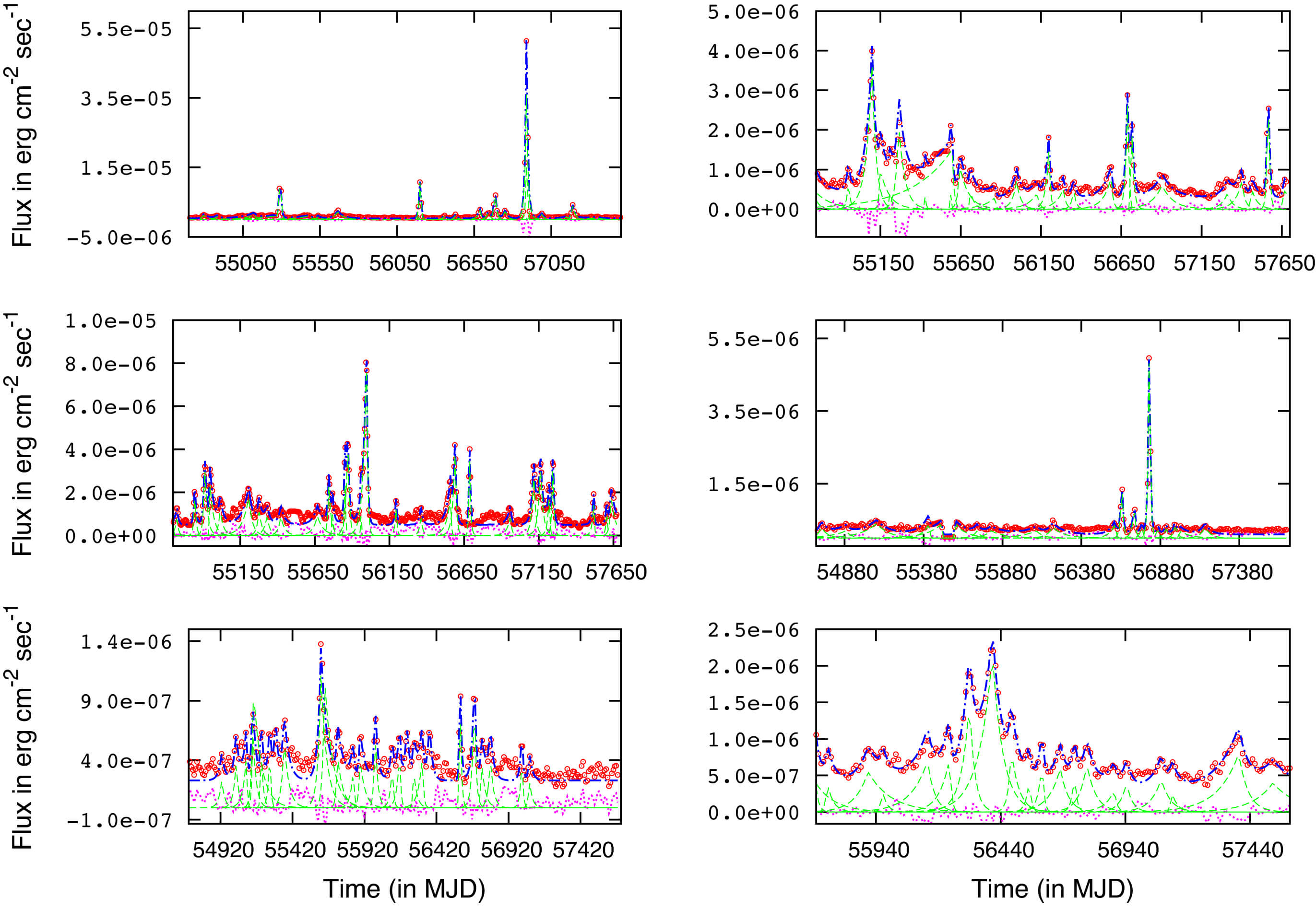Blazar Variability : Roy et al. 2019
Blazars are a particular sub-class of Active Galactic Nuclei (AGN) where the jets are aligned within a few degrees of our line of sight. They are extremely luminous, showing occasional high amplitude flux variability within a timescale anywhere from hours to years. Hence, the rise and decay time scales of blazar light curves give an estimate about the acceleration and radiative cooling times of the energetic particles near the jet.

The plot above shows the gamma-ray light curves from Fermi Gamma ray space telescope of six blazars. In Roy et al. 2019, we investigated the symmetry propoerty of ~200 long term (~months) and ~25 short term (~hours) light curves of ten blazars. We found that most of the long term outbursts are symmetric, indicating that the observed variability is dominated by the crossing timescale of a disturbance, i.e. a shock; but a larger fraction of short-term ares are asymmetric. We used MUlti-ZOne Radiation Feedback (MUZORF) model along with multi-wavelength data to constrain the energy injection mechanism and physical parameters associated with the blazar jets.